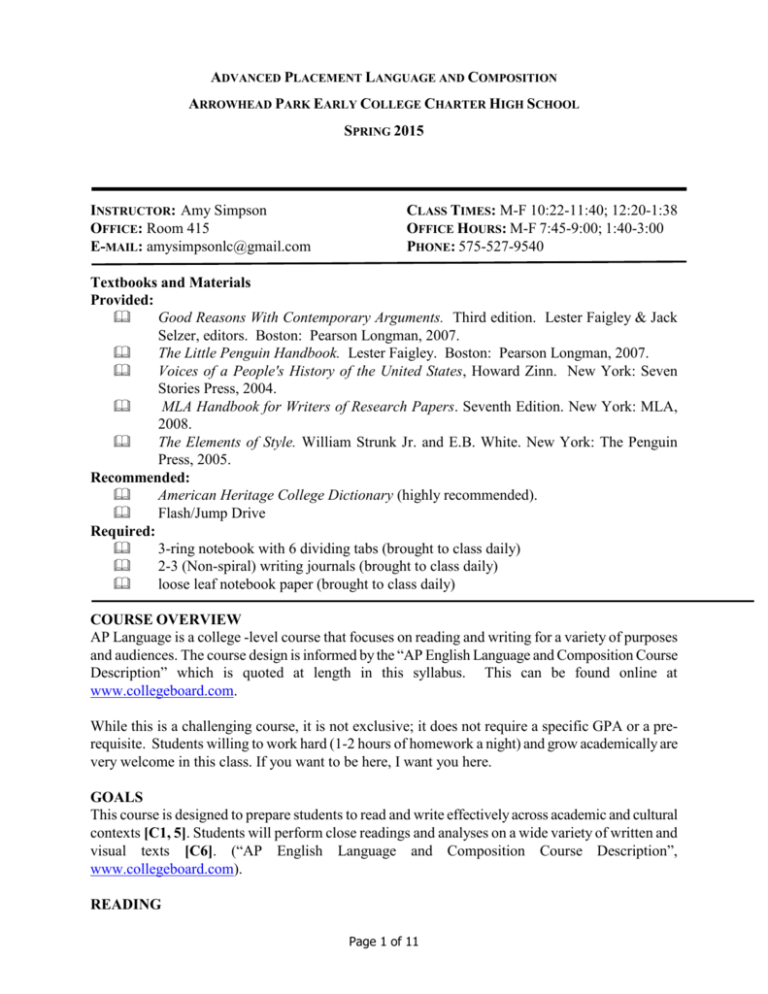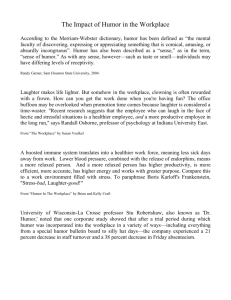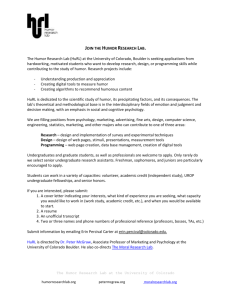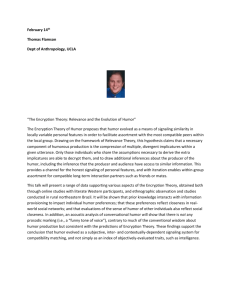
ADVANCED PLACEMENT LANGUAGE AND COMPOSITION
ARROWHEAD PARK EARLY COLLEGE CHARTER HIGH SCHOOL
SPRING 2015
INSTRUCTOR: Amy Simpson
OFFICE: Room 415
E-MAIL: amysimpsonlc@gmail.com
CLASS TIMES: M-F 10:22-11:40; 12:20-1:38
OFFICE HOURS: M-F 7:45-9:00; 1:40-3:00
PHONE: 575-527-9540
Textbooks and Materials
Provided:
Good Reasons With Contemporary Arguments. Third edition. Lester Faigley & Jack
Selzer, editors. Boston: Pearson Longman, 2007.
The Little Penguin Handbook. Lester Faigley. Boston: Pearson Longman, 2007.
Voices of a People's History of the United States, Howard Zinn. New York: Seven
Stories Press, 2004.
MLA Handbook for Writers of Research Papers. Seventh Edition. New York: MLA,
2008.
The Elements of Style. William Strunk Jr. and E.B. White. New York: The Penguin
Press, 2005.
Recommended:
American Heritage College Dictionary (highly recommended).
Flash/Jump Drive
Required:
3-ring notebook with 6 dividing tabs (brought to class daily)
2-3 (Non-spiral) writing journals (brought to class daily)
loose leaf notebook paper (brought to class daily)
COURSE OVERVIEW
AP Language is a college -level course that focuses on reading and writing for a variety of purposes
and audiences. The course design is informed by the “AP English Language and Composition Course
Description” which is quoted at length in this syllabus. This can be found online at
www.collegeboard.com.
While this is a challenging course, it is not exclusive; it does not require a specific GPA or a prerequisite. Students willing to work hard (1-2 hours of homework a night) and grow academically are
very welcome in this class. If you want to be here, I want you here.
GOALS
This course is designed to prepare students to read and write effectively across academic and cultural
contexts [C1, 5]. Students will perform close readings and analyses on a wide variety of written and
visual texts [C6]. (“AP English Language and Composition Course Description”,
www.collegeboard.com).
READING
Page 1 of 11
On average, students will be required to read 100-150 pages a week and will be expected to read
actively—taking notes, asking and answering questions, discussing style and examining ways in
which the author’s linguistic choices (syntax, diction, rhetorical strategies, etc.) contribute to tone,
audience suitability and effectiveness. According to the College Board, students will read from
“wide variety of prose styles from many disciplines and historical periods and gain understanding of
the connections between writing and interpretive skill in reading. [C5] Concurrently, to reflect the
increasing importance of graphics and visual images in texts published in print and electronic media,
students are asked to analyze how such images both relate to written texts and serve as alternative
forms of text themselves” [C6]. (“AP English Literature and Composition Course Description”,
www.collegeboard.com).
DISCUSSION
The course will be a seminar-style, discussion-based, college -level course. This means that the
quality of discussion depends very much on student preparation and participation. Students are
expected to arrive to class with the reading completed and with something thoughtful to say about
the reading. Students will be graded on their preparation for and participation in class.
WRITING
Writing will also be central to this course. Writing assignments will focus on critical analysis and
interpretation of varied texts. We will practice many different kinds of writing (persuasive, reflective,
research) [C1] through several types of assignments (researched arguments, narrative essays,
persuasive essays, college admission essays, reader responses, rhetorical analyses, timed writing
responses) for various audiences [C1, 3, 5]. We will treat writing as an ongoing process and much
of student writing will go through multiple revisions. [C2] Students will learn and practice
appropriate MLA citation and style rule for academic writing. [C-8] The final 8-10 page
Documented Argument research paper [C7] will have several drafts (with ample and frequent
feedback from me and peers) [C2, 7] and its most polished version will be published at the end of the
semester in a collection of AP student writings. When completing the course, students will be
prepared for the level of academic writing expected of them in college.
WRITING SKILLS
Through frequent peer and instructor feedback, this course will concentrate on developing
student writing characterized by:
• A wide-ranging vocabulary used appropriately and effectively; [C9]
• a variety of sentence structures, including appropriate use of subordination and coordination;
[C10]
• logical organization, enhanced by specific techniques to increase coherence, such as repetition,
transitions, and emphasis; [C11]
• a balance of generalization and specific illustrative detail; [C12] and
• an effective use of rhetoric, including controlling tone, establishing and maintaining voice, and
achieving appropriate emphasis through diction and sentence structure. [C13]
(“2008 AP English Language and Composition Course Description”, www.collegeboard.com).
OVERALL SKILLS
Through seminar-style discussions, formal and informal writings, peer review and instructor
feedback, AP English Language and Composition students should be able to:
• analyze and interpret samples of good writing, identifying and explaining an author’s use of
rhetorical strategies and techniques; [C5]
Page 2 of 11
• apply effective strategies and techniques in their own writing; [C13]
• create and sustain arguments based on readings, research, and/or personal experience; [C7]
• write for a variety of purposes; [C4]
• produce expository, analytical, and argumentative compositions that introduce a complex central
idea and develop it with appropriate evidence drawn from primary and/or secondary sources, cogent
explanations, and clear transitions; [C7, 10,11,13]
• demonstrate understanding and mastery of standard written English as well as stylistic maturity in
their own writings;[C10, 11, 12, 13]
• demonstrate understanding of the conventions of citing primary and secondary sources; [C7]
• move effectively through the stages of the writing process, with careful attention to inquiry and
research, drafting, revising, editing, and review; [C2]
• write thoughtfully about their own process of composition; [C2]
• revise a work to make it suitable for a different audience; [C1,2,3]
• analyze image as text; [C6] and
• evaluate and incorporate reference documents into researched papers. [C7,8]
(“2008 AP English Language and Composition Course Description”, www.collegeboard.com).
AP EXAMS
The College Board administers the AP Examinations. Students are not required to take the AP
Exams, but in order to receive college credit for AP courses, students must score a 3 or higher
(depending on the college or university) on the AP Language Exam. The Exam date is May 9.
EVALUATION
Course grading is weighted as follows:
Writing Assignments 45%
Class Attitude/Participation 20%
Projects 15%
Class Preparedness (homework) 20%
Most assignment descriptions will be accompanied by an assignment-specific rubric. Students will
sometimes be asked to modify the rubric and will often be asked to assign themselves a score based
on the rubric. This process encourages self-critique and will help make the assignment goals more
explicit and meaningful. For each of the major projects, students are required to submit a brief
reflection piece about the project.
INTRODUCTION: AP English Language Course rules and expectations, Rhetorical Terms,
Rhetorical Modes and Rhetorical Devices.
READINGS: [C5]
Good Reasons With Contemporary Arguments, Chapters 1-4
“The ‘Banking’ Concept of Education”, Paulo Freire
“Clergy Letter” and “Letter from a Birmingham Jail”, Martin Luther King;
“Civil Disobedience”, Henry David Thoreau:
“The Problem is Civil Obedience”, Howard Zinn
“I have a Dream”, Martin Luther King
“Gettysburg Address”, Abraham Lincoln
"Pericles's Funeral Oration" Thucydides, History of the Peloponnesian War
“A Whisper of AIDS”, Mary Fisher (handout, video)
Page 3 of 11
“Shirtworthy”, David Giffels, The New York Times
VIEWINGS
Paintings: [C6]
Marat Assassinated, Jacques Louis David
The Oath of the Horatii, Jacques Louis David
Napoleon at St. Bernard (Napoleon at the Crossing of the Alps, Jacque Louis David.
Napoleon crossing the Alps, Paul Delaroche
The Massacre at Chios, Eugene Delacroix
Liberty Leading the People, Eugene Delacroix,
George Washington Crossing the Delaware, Emanuel Gottielb Leutze
The Raft of the Medusa, Theodore Gericault
The Shootings of May Third 1808, Francisco Goya.
Guernica, Pablo Picasso
Videos: [C6]
“I have a Dream”, Martin Luther King, video, American Rhetoric website
Gentlemen Prefer Blondes, Billy Wilder (excerpts)
“Material Girl”, Madonna
Moulin Rouge, Baz Luhrmann (excerpts)
Assessments:
Quiz: Rhetorical Triangle [C9]
Quiz: Rhetorical Terms [C9]
Quiz: Vocabulary Terms from Readings [C9]
Quiz: Grammar Exercises: Coordinating Punctuation (semi colon, colon)[C10]
In-Class AP Lang Synthesis Question [C3,7]
Writings:
Reading Logs: [C4, 5] Must identify and discuss the following for each reading:
pathos, logos, ethos;
tone through analysis of diction, imagery, details, language, and syntax;
audience and occasion
Compare and Contrast Response: [C1, 4] Clergy Letter” and “Letter from a Birmingham
Jail”, Martin Luther King
Compare and Contrast Response: [C1, 4] “Civil Disobedience”, Henry David Thoreau and
“The Problem is Civil Obedience”, Howard Zinn
Rhetorical Analysis: Analyze rhetorical techniques in Barack Obama Inaugural Address.
Contextualize speech with other speeches we’ve studied: “I have a Dream”, “Gettysburg
Address”, and "Pericles's Funeral Oration". [C1, 4, 5]
UNIT 2: HUMOR
Students will explore written humor in American culture, examining the various forms and
functions of humor.
More specifically, they will consider:
1. Operations of humor. What Makes Something Funny? What makes something funny to
some and not to others? Does our humor change as we change? Why is something funny
in one context and unfunny in another?
2. Different types of humor. Broad humor; Situational humor; Observational humor;
Intellectual Humor; Absurdist Humor; Black Humor; Satirical Humor; Political Humor
3. Roles of humor in culture. What are the purposes of humor, other than amusement?: to
poke fun at human folly; to get us through difficult situations (better to laugh than to
Page 4 of 11
cry); safety valve effect; etc.
Situational Humor
Readings: [C5]
“The Secret Life of Walter Mitty”, James Thurber
The Importance of Being Earnest, Oscar Wilde
“Bartleby The Scrivener”, Herman Melville
“Teaching Poetry Writing to Singles”, Veronica Geng
Audio Texts:
“Fiasco”, Ira Glass, This American Life
“The Santa Land Diaries”, David Sedaris
Assessments:
Quiz: Vocabulary Terms from Readings and SAT Vocabulary List [C9]
Quiz: Grammar Exercises: Syntax [C10]
Reading Quizzes: The Secret Life of Walter Mitty”, The Importance of Being
Earnest , “Bartleby The Scrivener”
Writings:
Reading Logs: [C4, 5] Must identify and discuss the following for each
reading::
pathos, logos, ethos;
tone through analysis of diction, imagery, details, language, and syntax;
audience and occasion.
Sit Com Pitch: [C3, 12] Students must develop an imaginary situation
comedy and pitch it (orally and in writing) to a Hollywood producer.
In-Class AP Lang Synthesis Question [C3,7]
Observational Humor
Readings: [C5]
Dress Your Child in Corduroy and Denim, David Sedaris (excerpts)
Social Studies, Fran Liebowtiz (excerpts)
Metropolitan Life, Fran Liebowtiz (excerpts)
Audio Texts:
Sein Language, Jerry Seinfield (excerpts)
Assessments:
Quiz: SAT Vocabulary List [C9]
Quiz: Grammar-Agreement [C10]
Dialectic Journals [C3]
Writings:
Observational Humor Piece: “Did you ever notice?” [C1,3,4]
New Yorker Cartoon Captions[C1,3,4]
In-Class AP Lang Synthesis Question [C3,7]
Reading Logs: [C4, 5] Must identify and discuss the following for each reading:
pathos, logos, ethos;
tone through analysis of diction, imagery, details, language, and syntax;
audience and occasion.
Satirical Humor
Readings: [C5]
Scott Gutterman, “Gum” (Fierce Pajamas: An Anthology of Humor Writing from
The New Yorker)
Page 5 of 11
Paul Rudnick, “Teen Times” (Fierce Pajamas: An Anthology of Humor Writing
from The New Yorker)
Steve Martin, “Writing is Easy” (Fierce Pajamas: An Anthology of Humor
Writing from The New Yorker)
George Saunders, “I Can Speak” (Double Takes)
Embedded in America, Vol 16, The Onion
Susan Orlean, “My Life: A Series of Privately Funded Performance-Art Pieces”
(Fierce Pajamas: An Anthology of Humor Writing from The New Yorker)
Woody Allen, “Hassidic Tales and a Guide to Their Interpretation from a Noted
Scholar”, Fierce Pajamas: An Anthology of Humor Writing from The New
Yorker)
David Sedaris, “Holiday Newsletter” (Barrel Fever)
Assessments:
Quiz: Vocabulary Terms from readings [C9]
Quiz: Subordinate Clauses [C10]
Dialectic Journals [C3]
Writings:
Write three The Onion-style Newspaper Articles [C1, 2, 3, 4]
Each Small group creates a satirical newspaper [C1, 2. 3. 4]
Reading Logs: [C4, 5] Must identify and discuss the following for each reading:
pathos, logos, ethos;
tone through analysis of diction, imagery, details, language, and syntax;
audience and occasion.
Broad Humor:
Audio Texts:
Abbot and Costello, “Who’s on First?”
Assessments:
Quiz: Literary Terms [C9]
Writings
Dialectic Journals [C3]
Political Humor:
Readings: [C5]
Jon Stewart, America (excerpts)
Al Frankin, Lies and the Lying Liars Who Tell Them (excerpts)
Editorial Cartoon Packet from Good Reasons
Assessments:
Quiz: Vocabulary Terms from SAT list [C9]
Quiz: Pronoun Agreement [C10]
In-Class AP Lang Free Response Question [C3]
Dialectic Journals [C3]
Writings
Create Original Editorial Cartoon- and submit rhetorical analysis of it. [C6]
Cartoon Caption-write caption for caption less New Yorker cartoons [C6]
Write an original Political Speech filled with political hyperbole. [C1. 3]
Black Humor:
Readings:
Jonathon Swift , “A Modest Proposal”, (The Norton Anthology, Major Authors
7th edition)
Page 6 of 11
Flannery O’Connor, “A Good Man is Hard to Find”. “Good Country People”
(Double Takes)
Assessments:
Quiz: Vocabulary Terms from readings [C9]
In-Class AP Lang Free Response Question [C3]
Writings
Dialectic Journals [C3]
Reading Logs: [C5] Must identify and discuss the following for each reading:
pathos, logos, ethos;
tone through analysis of diction, imagery, details, language, and syntax;
audience and occasion
4-6 page Humor Essay [C1,2,4,9,10,11,12,13]—Submit Argument, get feedback
and revise; Submit Outline get feedback and revise, Submit Rough Draft do Peer
Reviews and revise. Must use MLA citation style for in text citations.
Absurdist Humor:
Readings: [C5]
Ionesco, Rinoercerous (excerpts)
Robert Benchley, “Why We Laugh--Or Do We?” (Fierce Pajamas: An Anthology
of Humor Writing from The New Yorker)
Audio Text:
Steve Martin, Let’s Get Small
Assessments
Quiz: Vocabulary Terms from readings [C9]
In-Class AP Lang Free Response Question [C3]
Dialectic Journals [C3]
Writings:
4-6 page Humor Essay [C1,2,4,9,10,11,12,13]—Submit Final Draft. Complete
composition log and error analysis based on my comments, revise and resubmit
corrected essay.
UNIT 3: PERSONAL NARRATIVES; PERSONAL NARRATIVE ESSAY
Readings:[C5]
Good Reasons with Contemporary Arguments Chapters TBA;
“Writing is ReWriting”, Donald Murray
“Simplicity” and “Clutter”, William K Zinsser, On Writing Well
“I Know Why the Caged Bird Sings” Maya Angelou, Good Reasons
“Unpacking the Invisible Knapsack”, Peggy Mcintosh
“The Change in Me” and “Six to Eight Black Men”, David Sedaris, Dress Your Child
in Corduroy and Denim
“Shooting an Elephant”, George Orwell
“The Border Patrol State”, Leslie Silko, Good Reasons
“The Men We Carry in Our Minds”, Scott Russell Sanders, Good Reasons
“Black Men and Public Spaces”, Brent Staples
“The Socks”, Marjane Satrapi, Good Reasons
“People Like Us”, David Brooks, Good Reasons
“Dumpster Diving”, Lars Eighner
Assessments:
In-Class AP Language Free Response Question [C3]
Page 7 of 11
Quiz: Vocabulary Terms from SAT list [C9]
Dialectic Journals [C3]
Writings:
Reading Logs: [C5] Must identify and discuss the following for specific readings
(TBA):pathos, logos, ethos;
tone through analysis of diction, imagery, details, language, and syntax;
audience and occasion
Writing to Music [C1, 3}—Compose writing to be read with music excerpts from
instructor.
Choices Scenarios [C3]—written discussion of ethical quandaries for college
students
Commencement Speech: [C1,2,4,9,10,11,12,13] 500 words; read my comments for
tightening your sentence structures and eliminating excess language, then reduce,
revise and resubmit as a 250 word commencement speech.
“This I Believe” [C1,2,4, 9,10,11,12,13] -350-500 word essay based on 1950s
Edward R. Murrow series and recent NPR series. Submit rough draft; resubmit
revised essay after instructor and peer feedback. Copyedit and prepare for
publishing. All essays will be published in book form.
Personal Narrative Essay [C1,2,4,9,10,11,12,13]-4-6 page Reflective Essay.
Submit Argument, get instructor feedback and revise; Submit Rough Draft, get
instructor feedback and complete Peer Reviews and revise. Submit Final Essay.
Complete composition log and error analysis based on my comments, revise and
resubmit corrected essay.
UNIT 4: CURRENT EVENT CONTROVERSIES—DOCUMENTED
ARGUMENT/CAMPAIGN MATERIALS
Readings:[C5]
Elements of Style, Strunk and White
MLA Handbook for Writers of Research Papers
“Appearances” by Carmen Vazquez, Good Reasons
“Those Extra Pounds—Are they Government’s Business?”, Good Reasons
“Don’t Clone Ron Reagan’s Agenda”, Richard Doerflinger, Good Reasons
“The Internet: A Clear and Present Danger”, Cathleen Cleaver, Good Reasons
“The Impact of Global Warming in North America”, Union of Concerned
Scientists, Good Reasons
Congressional Quarterly Researcher Reports on Health Care and Education
“Make Peace with Pot”, Eric Schlosser, Good Reasons
“Genes Take Charge, and Diets Fall by the Wayside”, Gena Kolota, The New
York Times
“The Right Drug to Target: Cutting Marijuana Use”, Joseph A. Califano, Good
Reasons
“The Border Patrol State”, Leslie Silko, Good Reasons
Viewings: [C6]
Sicko, Michael Moore
Seven Up! Paul Almond, Michael Apted
7 plus Seven, Michael Apted
Enron: The Smartest Guys in the Room, Alex Gibney
Assessments:
Page 8 of 11
Quiz: MLA Works Cited [C8]
Quiz: MLA In-Text Citation [C8]
Quiz: Avoiding Plagiarism [C8]
Quiz: Evaluating Sources [C7]
Quiz: Vocabulary Terms from SAT list [C9]
In-Class AP Lang Synthesis Question [C3]
Dialectic Journals [C3]
Writings
Elements of Style-[C9,10,11] Chapters 1-3. Write each rule and invent one example
of that rule. If possible, explain how you will use that rule in your Documented
Argument Essay.
Research Project: Campaign Plan or Documented Argument
Listing and Clustering Exercises-submit for instructor feedback [C7]
A Working Title & Proto Thesis-submit for instructor feedback [C7, 12]
Memo to Instructor-submit for instructor feedback [C3, 12]
Works Cited Exercise [C8]
Avoiding Plagiarism Exercise [C7]
Annotated Bibliography—Evaluate at least eight of research sources for creditability
and relevance submit for instructor feedback [C7, 8]
First Draft-submit for instructor feedback [C1,2,4,10,11,12,13]
Peer Reviews of First Draft [C1,2,4,10,11,12,13]
Second Draft-submit for instructor feedback [C1,2,4,10,11,12,13]
Peer Reviews of Second Draft[C1,2,4,10,11,12,13]
Final
Documented
Argument
and
Accompanying
Documents
[C1,2,4,10,11,12,13]
Reflective Essay [C3]
The RESEARCH PROJECT will serve as your final exam.
Page 9 of 11
AP CURRICULUM REQUIREMENTS
C1: The course teaches and requires students to write in several forms (e.g., narrative,
expository, analytical, and argumentative essays) about a variety of subjects (e.g., public
policies, popular culture, personal experiences).
C2: The course requires students to write essays that proceed through several stages or drafts,
with revision aided by teacher and peers.
C3: The course requires students to write in informal contexts (e.g., imitation exercises,
journal keeping, collaborative writing, and in-class responses) designed to help them become
increasingly aware of themselves as writers and of the techniques employed by the writers
they read.
C4: The course requires expository, analytical, and argumentative writing assignments that
are based on readings representing a wide variety of prose styles and genres.
C5: The course requires nonfiction readings (e.g., essays, journalism, political writing, science
writing, nature writing, autobiographies/ biographies, diaries, history, criticism) that are
selected to give students opportunities to identify and explain an author’s use of rhetorical
strategies and techniques. If fiction and poetry are also assigned, their main purpose should be
to help students understand how various effects are achieved by writers linguistic and
rhetorical choices. (Note: The College Board does not mandate any particular authors or
reading list, but representative authors are cited in the AP English Course.
C6: The course teaches students to analyze how graphics and visual images both relate to
written texts and serve as alternative forms of text themselves.
C7: The course teaches research skills, and in particular, the ability to evaluate, use, and cite
primary and secondary sources. The course assigns projects such as the researched argument
paper, which goes beyond the parameters of a traditional research paper by asking students to
present an argument of their own that includes the analysis and synthesis of ideas from an
array of sources.
C8: The course teaches students how to cite sources using a recognized editorial style
(e.g., Modern Language Association, The Chicago Manual of Style, etc.).
C9: The AP teacher provides instruction and feedback on students writing assignments,
both before and after the students revise their work, that help the students develop these skills:
1. A wideranging vocabulary used appropriately and effectively.
C10: The AP teacher provides instruction and feedback on students writing assignments,
both before and after the students revise their work, that help the students develop these skills:
2. A variety of sentence structures, including appropriate use of subordination and
coordination.
C11: The AP teacher provides instruction and feedback on students writing assignments,
Page 10 of 11
both before and after the students revise their work, that help the students develop these skills:
3. Logical organization, enhanced by specific techniques to increase coherence, such as
repetition, transitions, and emphasis.
C12: The AP teacher provides instruction and feedback on students writing assignments,
both before and after the students revise their work, that help the students develop these skills:
4. A balance of generalization and specific, illustrative detail.
C13: The AP teacher provides instruction and feedback on students writing assignments, both
before and after the students revise their work, that help the students develop these skills: 5.
An effective use of rhetoric, including controlling tone, establishing and maintaining voice,
and achieving appropriate emphasis through diction and sentence structure.
Page 11 of 11







